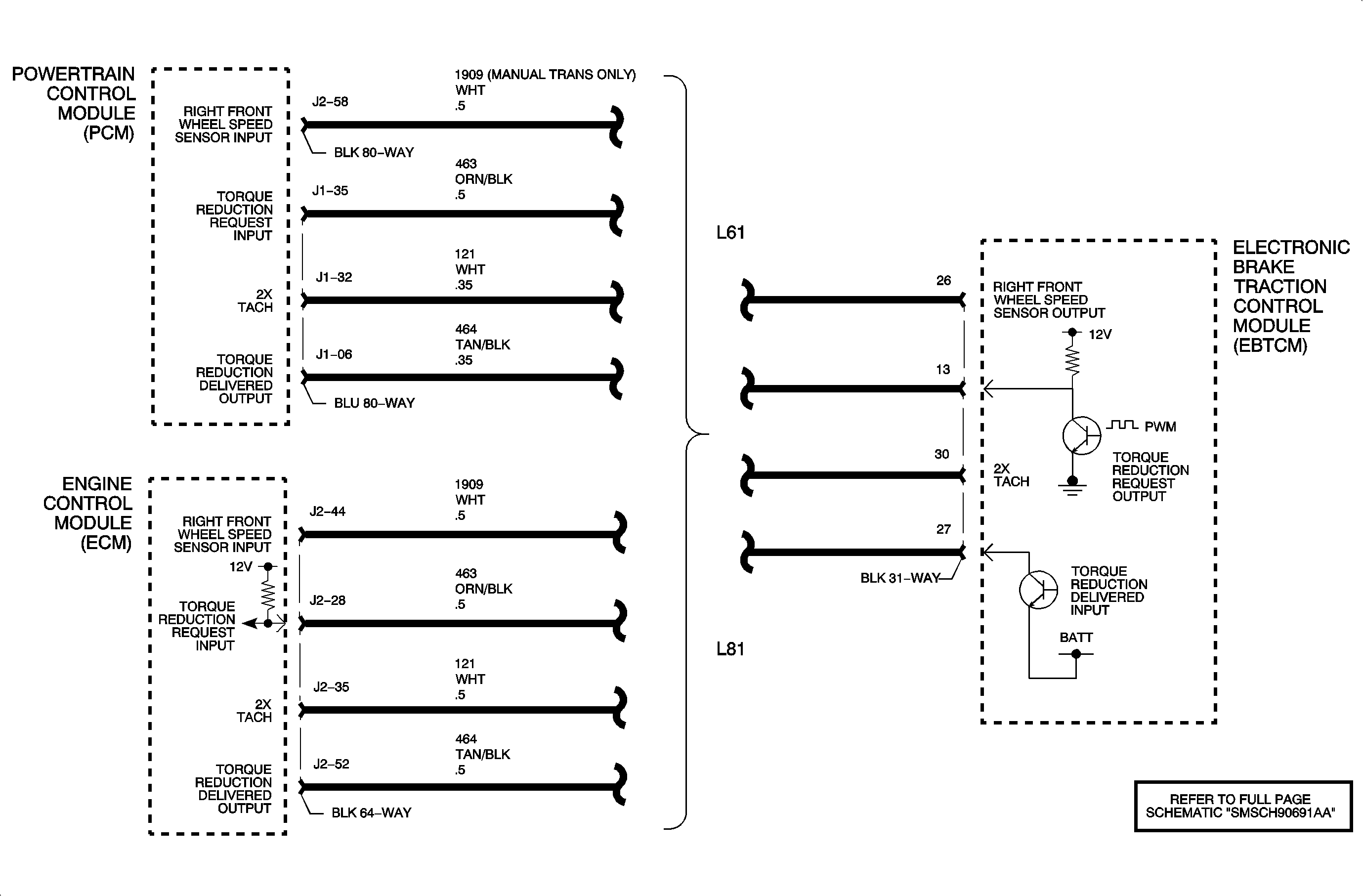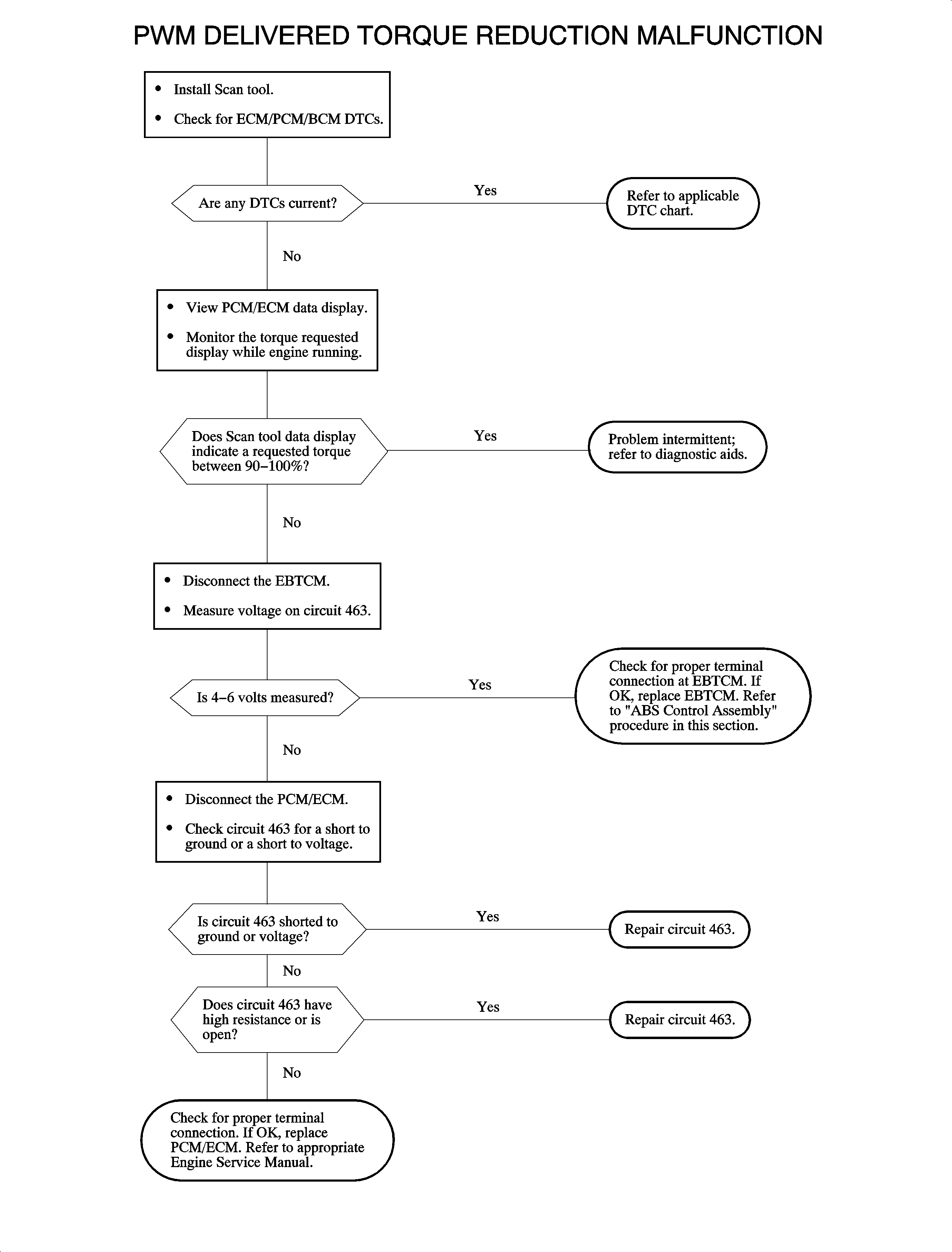
Circuit Description
The EBTCM and the PCM/ECM simultaneously control the traction control. The PCM/ECM
reduces the amount of torque supplied to the drive wheels by retarding spark timing
and selectively turning off the fuel injectors. The EBTCM actively applies the brakes
to the front wheels in order to reduce torque.
The EBTCM sends a requested torque message via pulse width modulated (PWM) signal
to the PCM/ECM. The duty cycle of the signal is used to determine how much engine
torque the EBTCM is requesting to the PCM/ECM to deliver. Normal values are between
10-90 percent duty cycle. The signal should be at 90 percent when traction control
is not active and at lower values during traction control activations. The PCM/ECM
supplies a pull up voltage of 5 volts that the EBTCM switches to ground to create
the signal.
Conditions for Setting the DTC
DTC C0241 will set if the following conditions exist:
| • | The PCM/ECM does not receive the requested torque signal (open or shorted
circuit). |
| • | An incorrect requested torque signal is detected by the PCM/ECM. A PWM
signal is sent back to the EBTCM via the delivered torque circuit. |
When DTC C0241 sets:
| • | Traction control will be disabled. |
| • | The TRACTION OFF indicator turns on. |
| • | The ABS remains functional. |
Diagnostic Aids
Possible causes for DTC C0241 to set:
| • | An open in the requested torque circuit |
| • | A requested torque circuit shorted to ground or voltage |
| • | A requested torque circuit has a wiring problem, terminal corrosion, or
a poor connection |
| • | The PCM/ECM is not receiving information from the EBTCM |
DTC C0241



